LG G4 vs. Galaxy S6: Ultimate Android Face-Off
Here's how the LG G4 and Galaxy S6 stack up, from design to cameras to performance.
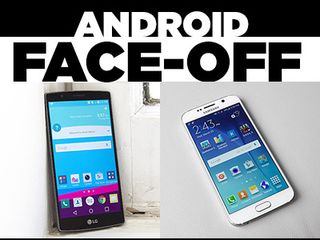

The battle for the title of ultimate Android phone is more evenly matched than ever. The LG G4 and Samsung Galaxy S6 are both at the top of their class, packing stunning 16-megapixel cameras and gorgeous quad-HD displays. They're both decidedly more premium-looking than their predecessors, with the G4 adopting a lust-worthy leather design and the S6 finally ditching plastic for a combination of glass and metal.
While both phones are excellent, the Galaxy S6 and LG G4 have some significant differences, from performance to battery life to special features. There can only be one king to rule the Android arena, so I put the two phones through a nine-round showdown to determine which one is the better buy.
Design
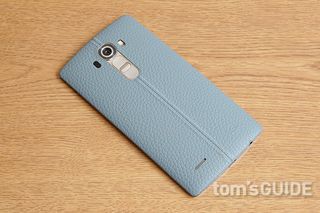
The LG G4 comes in either a plastic or handcrafted leather exterior, the latter of which helps the phone stand out from its metallic peers. Available in brown or black, the leather G4 feels good, adds some extra durability and makes LG's flagship look just as much like a fashion accessory as it does a phone.
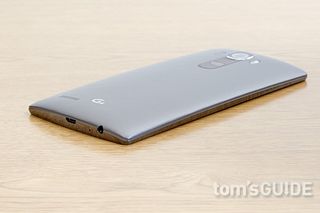
The plastic G4 (available in white or charcoal) is no slouch either, touting a sturdy back panel with a subtle, tactile checkerboard design. Both versions of the G4 feature the flagship's signature curved backside, as well as the rear-facing volume and lock buttons unique to LG's phones. This design has been around for a few years now, but still might take some getting used to for LG newbies.
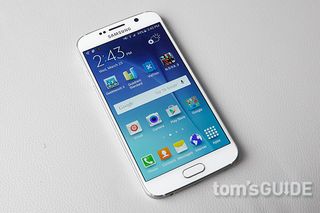
While the G4 gained a shiny leather coat, the Galaxy S6 is a complete overhaul from its predecessors. Samsung has finally ditched plastic in favor of a stunning premium design, complete with slim metal edges and an alluring Gorilla Glass 4 rear panel that comes in black/blue or white/gold.
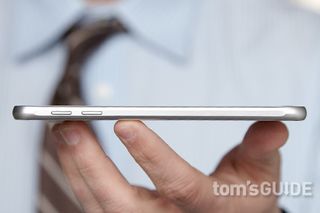
At 4.9 ounces, the S6 is slightly lighter than the 5.47-ounce G4. The 0.39-inch-thick G4 starts out thicker than the S6 (0.27 inches) in its center, but its far edges are slimmer than the S6's already-svelte sides. Overall, I prefer the way the glass-and-metal S6 feels to hold, especially since the G4's wider display makes it a bit less one-hand friendly.
Winner: Galaxy S6. The G4's leather design and removable backside are nice, but the Galaxy S6 looks and feels better.
Display
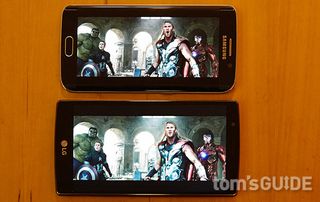
The G4 and Galaxy S6 both offer rich quad-HD displays, though the G4's display is larger (5.5 vs. 5.1 inches), and promises more cinematic picture quality via the Quantum technology found in its screen.
The Avengers: Age of Ultron trailer looked excellent on both devices, but there were some notable differences. The Avengers' skin tones and multi-hued costumes looked more realistic on the G4's display, while the supercolorful S6 appeared slightly oversaturated by comparison. However, because the S6 crams the same resolution into a smaller display, the video looked sharper on Samsung's phone. It also looked noticeably brighter, and offered better viewing angles.

Our lab tests told largely the same story, as the S6's 521-nit display outshone the 396-nit G4 by a long shot. Samsung's handset can display more of the sRGB color gamut (159 percent vs. 110 percent), though the G4's color accuracy rating of 3.46 was a bit closer to a perfect 0 than was the S6's mark of 4.7.
Winner: Galaxy S6. The LG G4's display is bigger, but the S6's brighter and more colorful display gives it the edge.
Audio
Neither phone is ideal for cranking music at max volume, but I found the S6's speaker to be more satisfying. When listening to the sunny guitars and breezy vocals of Best Coast's "The Only Place," I found the track to be both crisper and slightly louder on the S6's bottom-facing speaker than on the G4's rear-facing one.
Winner: Galaxy S6.
Interface
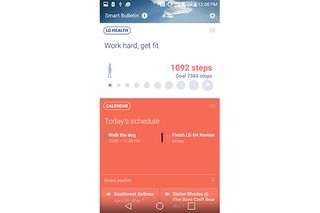
The G4's UX 4.0 interface adds its own flair to Android Lollipop, complete with a well-organized quick-settings menu that makes it easy to change brightness or pop open a windowed QSlide app. My favorite part of the phone's UI is Smart Bulletin, which provides a quick look at your calendar, music player and daily step count once you swipe left from the home screen.
Samsung's TouchWiz skin puts a similarly slick layer of gloss over the S6's interface, eliminating a good deal of the clutter that plagued older Galaxy phones. The S6's quick-settings menu is just as clean and navigable as the G4's, and there's an S Finder feature for searching for any app, file or setting on your phone.
Both phones let you split the screen between two different apps, but the S6 provides more options. Samsung's smartphone lets you run apps such as Facebook and Instagram in multi-window mode, while you're mostly limited to Google apps when splitting the screen on the G4.
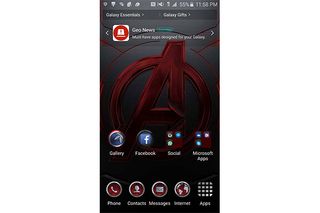
I prefer the better spacing and the satisfying haptic feedback of the S6's keyboard, and love that I can download custom themes that sprinkle the phone's interface with my favorite Marvel superheroes.
Winner: Galaxy S6. The S6's slick interface, better split-screen mode and superior keyboard make the phone a joy to navigate.
Features

Aside from its robust camera app (more on that later), the LG G4 is pretty spartan when it comes to special features. Its KnockOn feature lets you wake the device with a quick double-tap of the screen, and Glance View lets you swipe down to check the time without even waking the phone up. While it may not be a special feature per se, the G4's replaceable battery and microSD slot give this phone a big advantage over the S6, at least for power users.
The Galaxy S6 is a bit more high-tech by comparison, offering a fingerprint scanner on the home button and a heart-rate monitor in the back. The smartphone supports Qi and PMA charging standards, meaning you can charge it with a wireless battery pad or at select businesses, such as McDonald's or Starbucks. The G4 also supports wireless charging, but only when used with a special back cover.
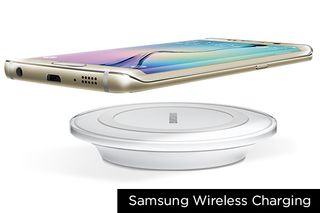
Samsung's flagship will soon gain Samsung Pay, which, using special magnetic tech, will allow S6 owners to make easy mobile payments at just about any register that takes credit cards. However, while many of the S6's best features won't be practical until later on, the G4's expandable storage and replaceable battery let you make the most of the phone right out of the box.
Winner: LG G4. Wireless charging and mobile payments are nice, but the ability to change batteries and add extra storage goes a long way.
Performance
The Samsung Exynos-powered Galaxy S6 and Snapdragon 808-infused LG G4 are both beasts when it comes to real-world performance. These two phones allowed me to watch a YouTube video while simultaneously flipping through my photo gallery with no slowdown. I was able to launch the camera app on both devices in under a second, and each phone was similarly quick when starting up the graphically intense Modern Combat 5.

However, when looking at benchmark results, the extra oomph provided by the S6's octa-core Exynos CPU is clear. The S6 trumped the G4 on the Geekbench 3 performance test (5,120 versus 3,493), and exhibited stronger graphics muscle on 3DMark Ice Storm Unlimited (21,193 versus 18,510).
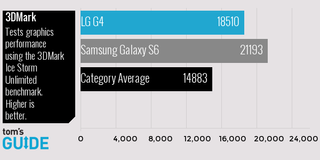
Winner: Galaxy S6. Both of these phones are superfast, but the Galaxy S6 packs the most power.
Camera
The cameras found in the G4 and Galaxy S6 are both significant steps up from last year. Each phone touts 16-megapixel rear sensors, though the G4 camera's f/1.8 aperture is designed to let in more light than the S6's still-impressive f/1.9 aperture.

This shot of a sunny bed of flowers looks stunningly lifelike on both phones, but the S6 produced slightly deeper colors.
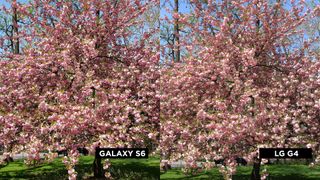
This shot of a pink tree set against a tall Manhattan building was similarly sharp on both devices, but the S6 once again offered better color.

The Galaxy S6 takes superior low-light shots, producing brighter colors and more realistic skin tones both with flash on and with it off. The G4 is still solid under minimal light, but I noticed some strange green and yellow overtones in my shots.
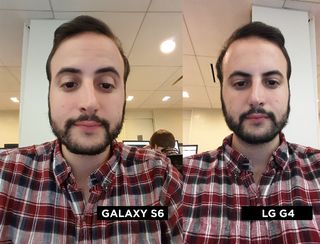
The G4's 8-MP front shooter takes stellar selfies, as it accurately captured my skin tone and highlighted every last strand of my beard in great detail. I still enjoyed looking at myself using the Galaxy S6's 5-MP front shooter, which packs a wider 120-degree lens, but my G4 selfies looked better.
If you want as much control as possible over your shots, you will prefer the G4. LG's phone offers a robust manual mode packed with DSLR-like features, including the ability to tweak white balance, focus and shutter speed in real time. While not as hard core, the S6 has some neat features of its own, including Virtual Shot mode for taking 360-degree photos and Selective Focus for tweaking your shot's focus after you've taken it.
Winner: Galaxy S6: The G4's strong low-light performance and robust manual mode is enticing for enthusiasts, but we can't resist the S6's more colorful shots.
Apps
Samsung and LG were both wary of loading their new flagships with a mess of preloaded apps, instead opting for a few useful utilities on each phone.
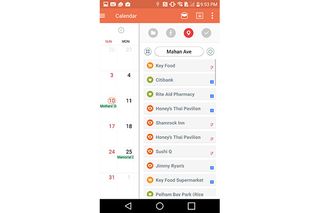
The G4 offers QMemo for quickly annotating whatever's on your screen, as well as a handy Event Pocket feature that filters all of your Facebook invites and to-do lists into one unified calendar.
Some of the S6's standout apps include an Optical Reader that scans business cards, as well as S Translator for filtering foreign languages.

Both phones have dedicated health apps, LG Health and S Health, that each let you view your daily step count and set workout goals. However, Samsung's fitness app has the advantage of being able to track your heart rate, thanks to the S6's built-in monitor.
The G4 and S6 are both part of the Google Play ecosystem, meaning you'll be able to download any of the Play Store's million-plus apps on either device.
Winner: Draw. The Galaxy S6 is better for fitness, but there aren't many significant exclusive apps on either side.
Battery Life
Neither the G4 nor the S6 offers stellar battery life, but the Galaxy S6 has the slight edge. Samsung's phone endured 8 hours and 32 minutes of continuous Web surfing over 4G LTE on T-Mobile, while the G4 lasted roughly an hour less on AT&T's networks, at 7:38.
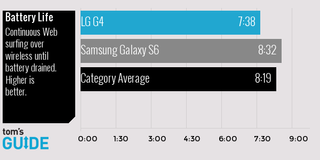
The Galaxy S6 just barely surpassed our 8:27 average, while the G4 lagged behind it. The G4's battery life is slightly lower than last year's G3 (7:56), while the S6's endurance time is a big downgrade from the S5's 10 hours and 57 minutes.
Winner: Galaxy S6. I wish it lasted longer, but the S6's battery trumps the G4 by an hour.
Overall Winner
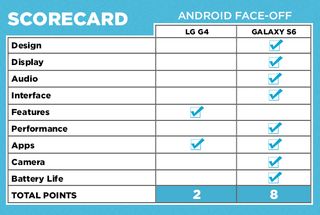
Don't let the scorecard fool you — the Galaxy S6 took the majority of the rounds in this showdown, but just barely. The S6 and LG G4 are both simply that good, each offering slick designs, beautiful displays and lust-worthy cameras.
Still, the Galaxy S6 simply looks and feels better. Its elegant construction is nicer to hold; its screen is brighter and more colorful, and it takes pictures that are just that more vibrant than the G4's. Power users who want a bigger screen, replaceable battery and expandable storage are better off with the G4, but the S6 is still our top overall pick.
Mike Andronico is an Associate Editor at Tom's Guide. Follow Mike @MikeAndronico. Follow us@TomsGuide, on Facebook and on Google+.
Sign up to get the BEST of Tom’s Guide direct to your inbox.
Upgrade your life with a daily dose of the biggest tech news, lifestyle hacks and our curated analysis. Be the first to know about cutting-edge gadgets and the hottest deals.
Mike Andronico is Senior Writer at CNNUnderscored. He was formerly Managing Editor at Tom's Guide, where he wrote extensively on gaming, as well as running the show on the news front. When not at work, you can usually catch him playing Street Fighter, devouring Twitch streams and trying to convince people that Hawkeye is the best Avenger.

